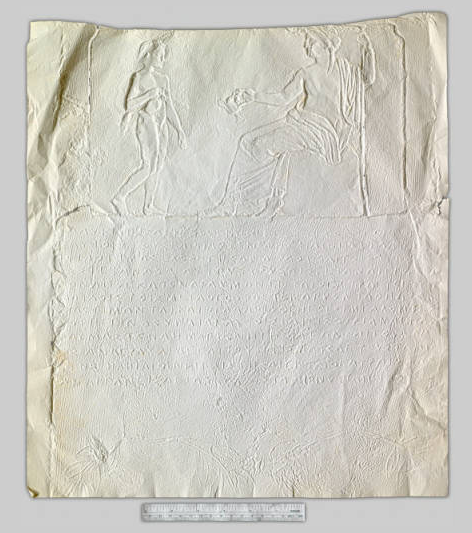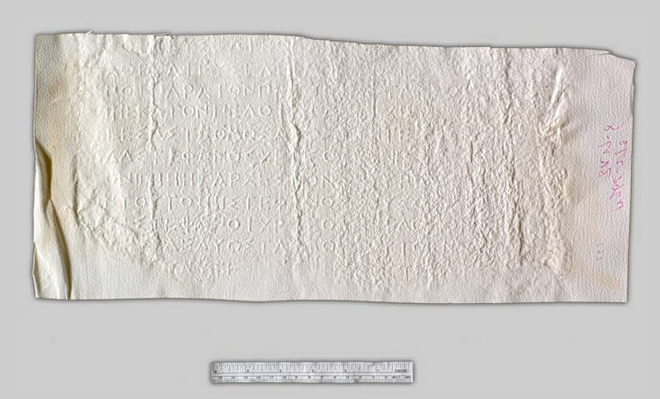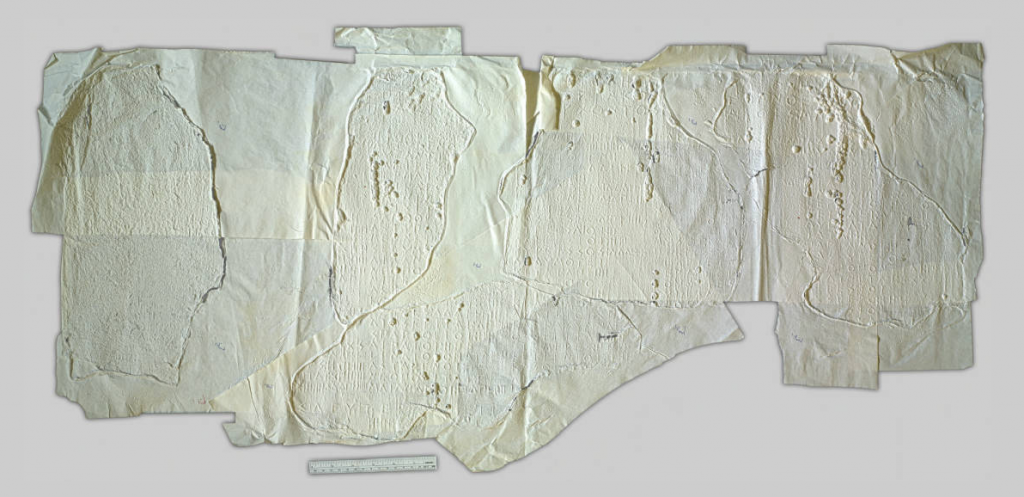Collaborative projects are at the heart of the Digitization Center. Today, we are highlighting the work done with UBC’s Department of Classical, Near Eastern, and Religious Studies (CNERS) and students from the From the Stone to Screen project.
From Stone to Screen is a multidisciplinary, open access and collaborative digitization project entirely run by students that is increasing access to two collections of epigraphic squeezes. An epigraphic squeeze is the impression of an inscription made by placing wet filter paper on stone letters and using a horse haired brush to press the paper into the grooves of the stone. Once the paper has dried, it is carefully peeled off and a mirror copy is revealed. Here at the Digitization Centre, students involved in the project digitize the squeezes and other artifacts using our TTI table, allowing for exceptional details to be maintained in the digitized copy.
The epigraphic squeezes come from the collections held by CNERS, which were originally donated by two Canadians: Dr. Malcolm MacGregor, a scholar in Athenian history and Greek epigraphy in addition to being a UBC alumnae and eventual head of the department until retirement, in 1975; and by George Fuller’s father, a diplomat who purchased artifacts from antiquity shops in a number of cities including Cairo, Jerusalem and Baghdad, in 2001.
What makes this collection so awesome is that unlike a photograph, an epigraphic squeeze provides 3-dimensional information and an exact replica of the inscription. The squeezes can be scanned, digitized and manipulated in many ways. Digitizing these epigraphic squeezes is resulting in invaluable resources for researchers and users around the world, since inscriptions are only available in unmovable stones, getting access to inscriptions can be difficult. For example, many physical stones are in fragments and the majority of stones in the collection are found in the Epigraphical Museum of Athens, as well as the National Archaeological Museum of Athens and the agora. In many cases, researchers require special permission to take photographs of the original stones. Another barrier to accessing the physical stones is many are in storage and not accessible to the public without special permission. Numerous institutions have also stopped allowing epigraphic squeezes to be made on stones. Thus, the digitized squeezes in these collections allow unrestricted access to scholars to virtually transport the stones to research institutions worldwide.

Dedicatio Choregica IG_13_0969_001 – Epigraphic squeeze with figurative decoration.
The fact that the project is primarily run by a small group of ten volunteers and four paid staff positions (for 2014-2015), partially funded by the Teaching and Learning Fund (TLEF), is remarkable. The students oversee the curating, research, volunteer coordination, grant writing, management of funds and other responsibilities necessary for the advancement of the project, all in addition to undergraduate, masters and PhD level course and thesis work.
The students are already looking ahead to the future by brainstorming and planning what will happen to the digitized squeezes once the metadata and images have been fully processed. One plan is to create teaching packages, or “classroom modules”, for Greek language courses, Greek history courses and archaeology courses at UBC with ready-made assignments. These learning modules would be made available online for instructors and teachers outside the university to use. The students are also thinking of creating short videos that describe what a squeeze is, how archaeologists get them, how they transcribe and basically, how epigraphic squeezes get from stone to screen.
Currently, there are over 200 epigraphic squeezes available online, with many more to come! Click here to visit the collection via our digital collections webpage.
Thank you to Chelsea Gardner, the Project Director and a PhD student in Classical Archaeology in the CNERS department here at UBC, for taking the time to discuss the project.
Visit the official From Stone to Screen website. You can also follow the project’s progress and updates on Twitter.




